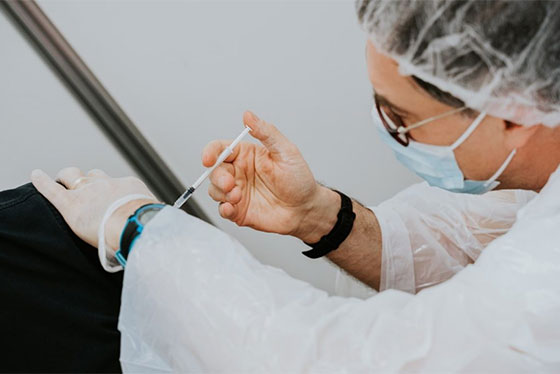Here’s How New Technology Is Helping Healthcare Worldwide During The Pandemic
- July 9, 2022
- admin
- 0

The coronavirus pandemic marked a before and after in the lives of people and companies around the world. Due to the pandemic, the health and economic crisis grew in each city. The news of a new virus led large pharmaceutical companies to develop the vaccine against Covid-19, which became a collective effort by hundreds of scientists, governments, and investors to prevent more infections and deaths.
The tech industry was one of the sectors that gained the most prominence during the confinement, not only with the optimization of entertainment, streaming, and online shopping platforms, but also with scientific development. In this article, we will learn how science and technology have worked together to overcome the coronavirus crisis and what the future of the human race’s health will be after this pandemic.
The Technology Behind the Vaccine
The BBC recently published a report on how Pfizer and BioNTech developed the newest and most effective vaccine to date, which is 90 percent effective. Thanks to the constant collaboration of scientists, technology companies, and the world’s governments, this achievement has been possible.
In Moderna’s case, the Massachusetts-based company has worked with biotechnology and messenger RNA systems, one of the primary patents on Pfizer’s vaccine. This technological development allows the vaccine to arrive in advance to quickly address the crisis in the United States and the world. Furthermore, mass production would allow at least 1.3 billion people to receive the dose by early 2021.
Remote Medical Care
Large communication applications and platforms also helped the healthcare system during the pandemic. Zoom, one of the most sought-after video calling apps in the first months of Covid-19, launched a telehealth plan called ‘Zoom for Healthcare’, allowing people to receive medical assistance through mobile devices. In this way, personalized consultations are accessible to millions of users from the comfort of their homes.
Data From Virus Hotspots in Real-time
Institutions such as the World Health Organization and the media have used data science and statistics patents to publish virus-related information around the world. These systems collect information from the daily reports of health ministries around the world, allowing real-time dissemination of the number of infections, deaths, and recovered. In this way, it is easier for international organizations to estimate improvements or highly dangerous places.
